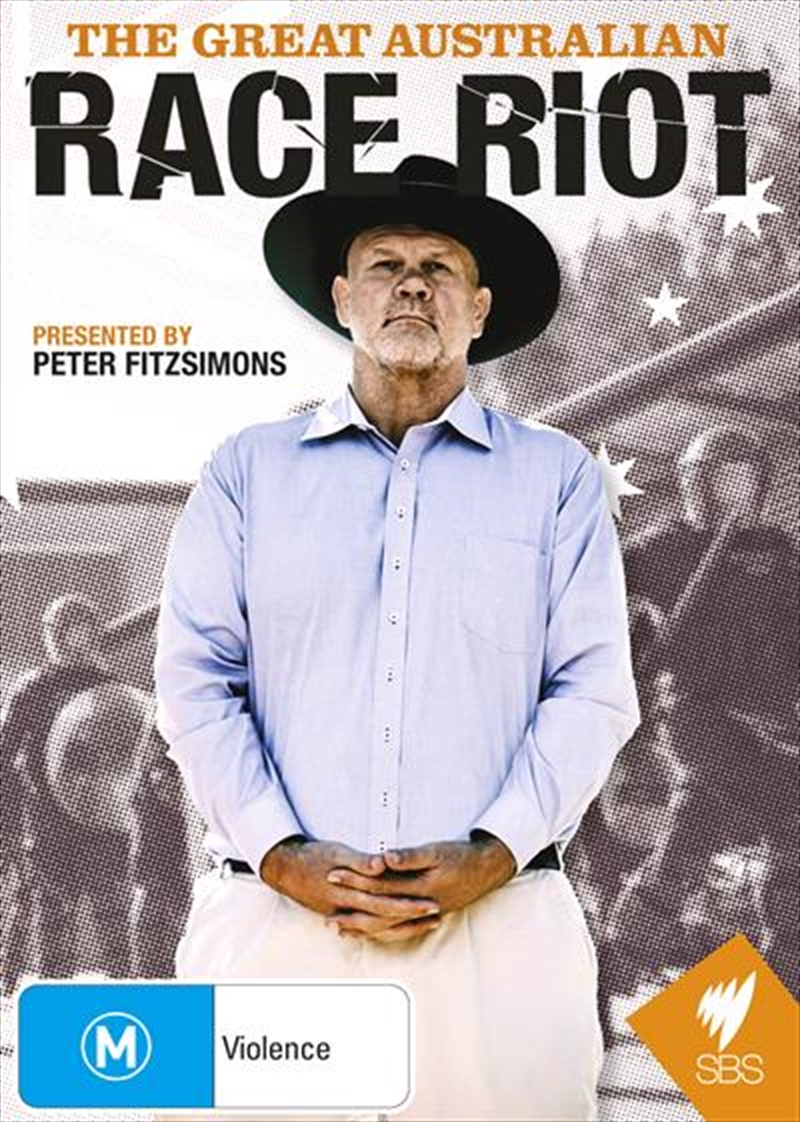The Australian Race Riot is a distinctive and enduring part of the way our country works. Major Race Riots happen here only slightly less often than we compete in the Olympics, yet they are accommodated by none of our national myths. Race Riots, while always big news at the time, inhabit only the margins of history. This series not only reclaims the dramatic stories, heroes and villains of tribe-on-tribe street fighting but also reframes our Race Riots as a vicious but vital part of our polity and progress. While the bashing, bleeding and bigotry of Race Riots is never great, Australians reaction to this kind of racial disharmony both in and after the moment has regularly transformed the country. Race Riots have sometimes brought out the best as well as the worst in us. They are a consistently revealing window into who we are. In making the case for the significance of Race Riots its important to distinguish them from other forms of violence and racism. Race Riots are different both from regular class clashes (the Rum Rebellion to the Bastard Boys) and the frontier wars between Indigenous and non-Indigenous Australians. In particular, Aboriginal Race Riots are a late 20th century phenomenon. Before that black Australia fought white on a long-term basis, understanding that defeat meant death for many, dispossession for all. Indeed the recent Aboriginal Race Riots may well mark a nasty and partial kind of normalising of the countrys relationship with its indigenous peoples. The Great Australian Race Riot charts the battles and their meanings from 1846 to 2013, Irish to Muslims. Until now the riots have been named for the side of the fight less numerous and connected to power. But this series, while delving into who fought and how the battle raged, the morality of the events, also tells the story of the powerful: the soldiers, the cops, their political and economic masters. From the opening of Episode 1, Australian power both respected and feared its citizens right to riot. Australia had to choose early whether to listen to or silence the voice of its different races as expressed in violence. In 1846 it chooses both options: in the Melbourne Orange Riots it hears the South Pacific echo of hundreds of years of mutual loathing and slaughter by British Protestants and Irish Catholics and moves decisively to stamp out the violence. Not here, Australias leaders say: we are already too interdependent and integrated to tolerate this conflict. But at the same time Australia insists on equal treatment under the law for Irish Catholics even though they remain discriminated against, politically and economically second tier, all over the British Empire including nearby New Zealand. A promising start for tolerance. Race Riots in the second half of the nineteenth century are almost exclusively against the Chinese community. Most are in the goldfields. The rioters are white and murderous. The Chinese communities show great courage in defending themselves but they also hold to their faith in the law. In return the law, at least in Victoria then New South Wales, defends their rights and property albeit after in Victoria then New South Wales, defends their rights and property albeit at the spilling of Chinese blood. But in Queensland white Australians, often in the minority, are also fighting frontier wars with Aboriginal Australia. The habit of racism and violence is ingrained. Race Riots become increasingly fatal for Chinese and white Australians. As the century wanes and the colonies contemplate Federation, Australia opts to deal with race in a way that runs contrary to the rest of the British Empire and even to agreements that London has signed on our behalf. The Australian nation is founded on a policy of Asian exclusion and indigenous disenfranchisement. The rights of Chinese who have already arrived are protected. But the door is closed. Australia for the White Man, trumpets The Bulletin from its masthead, China for the Chow. I
Title: Great Australian Race Riot, The
Format: DVD
Release Date: 04 Feb 2015
Actor(s): Documentary
Sku: 2291151
Catalogue No: SBS1657
Category: Documentary
Disc Count: 1
Aspect Ratio: 16:9
OFLC Rating: M
Run Time: 156
Transfer Format: 16:9 Enhanced, Widescreen
Video Format: PAL
Primary Audio: Dolby Digital 2.0
Language: English, Dolby Digital 2.0
Subtitles: English for the Hearing Impaired
Region Code: 4
OFLC Advice: Violence
Production Studio: SBS Television
Dubbed Languages: English, Dolby Digital 2.0
Genre: Special Interest,






